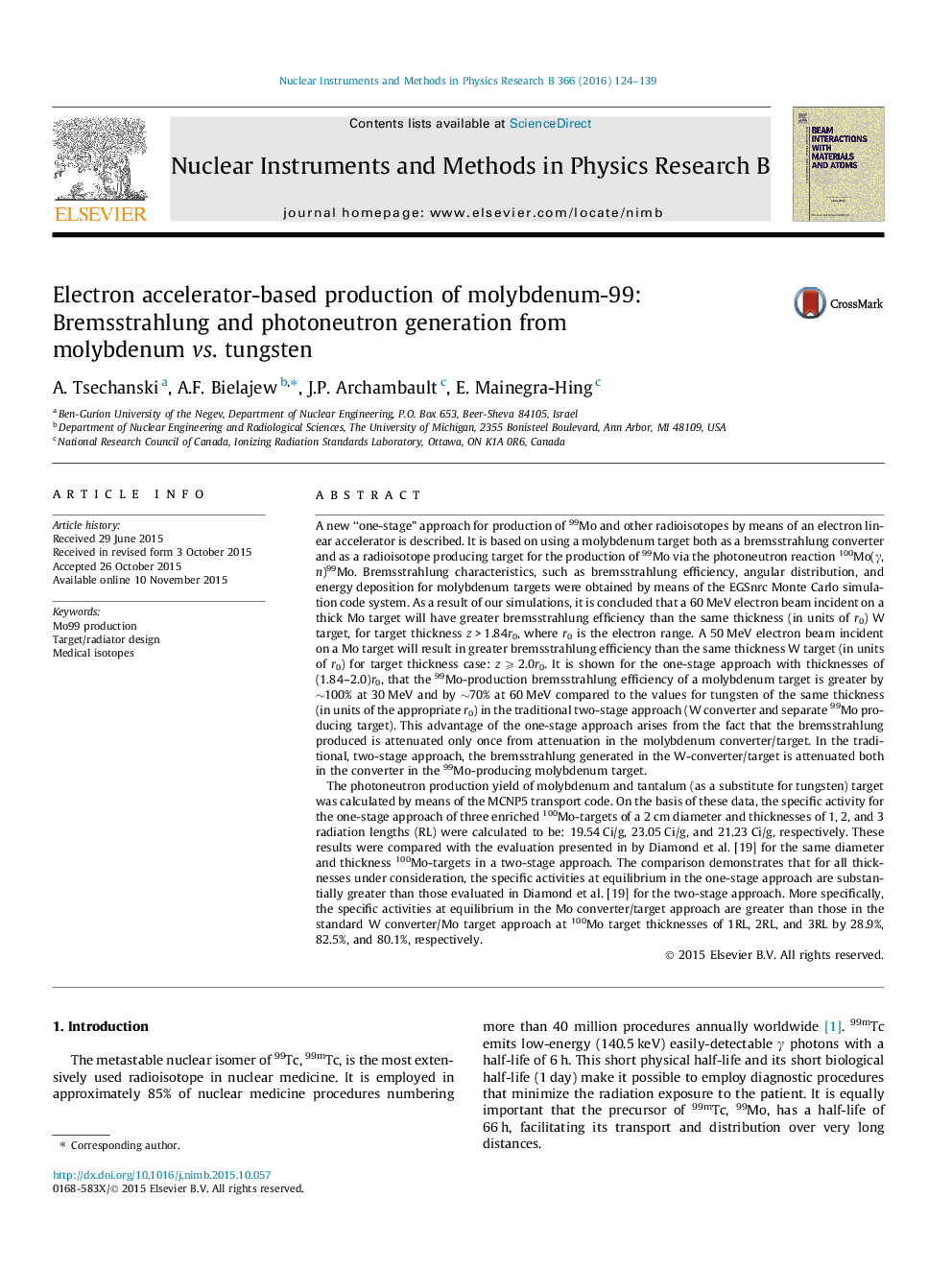| کد مقاله | کد نشریه | سال انتشار | مقاله انگلیسی | نسخه تمام متن |
|---|---|---|---|---|
| 1682182 | 1518655 | 2016 | 16 صفحه PDF | دانلود رایگان |
A new “one-stage” approach for production of 99Mo and other radioisotopes by means of an electron linear accelerator is described. It is based on using a molybdenum target both as a bremsstrahlung converter and as a radioisotope producing target for the production of 99Mo via the photoneutron reaction 100Mo(γ,n)99Mo. Bremsstrahlung characteristics, such as bremsstrahlung efficiency, angular distribution, and energy deposition for molybdenum targets were obtained by means of the EGSnrc Monte Carlo simulation code system. As a result of our simulations, it is concluded that a 60 MeV electron beam incident on a thick Mo target will have greater bremsstrahlung efficiency than the same thickness (in units of r0) W target, for target thickness z > 1.84r0, where r0 is the electron range. A 50 MeV electron beam incident on a Mo target will result in greater bremsstrahlung efficiency than the same thickness W target (in units of r0) for target thickness case: z ⩾ 2.0r0. It is shown for the one-stage approach with thicknesses of (1.84–2.0)r0, that the 99Mo-production bremsstrahlung efficiency of a molybdenum target is greater by ∼100% at 30 MeV and by ∼70% at 60 MeV compared to the values for tungsten of the same thickness (in units of the appropriate r0) in the traditional two-stage approach (W converter and separate 99Mo producing target). This advantage of the one-stage approach arises from the fact that the bremsstrahlung produced is attenuated only once from attenuation in the molybdenum converter/target. In the traditional, two-stage approach, the bremsstrahlung generated in the W-converter/target is attenuated both in the converter in the 99Mo-producing molybdenum target.The photoneutron production yield of molybdenum and tantalum (as a substitute for tungsten) target was calculated by means of the MCNP5 transport code. On the basis of these data, the specific activity for the one-stage approach of three enriched 100Mo-targets of a 2 cm diameter and thicknesses of 1, 2, and 3 radiation lengths (RL) were calculated to be: 19.54 Ci/g, 23.05 Ci/g, and 21.23 Ci/g, respectively. These results were compared with the evaluation presented in by Diamond et al. [19] for the same diameter and thickness 100Mo-targets in a two-stage approach. The comparison demonstrates that for all thicknesses under consideration, the specific activities at equilibrium in the one-stage approach are substantially greater than those evaluated in Diamond et al. [19] for the two-stage approach. More specifically, the specific activities at equilibrium in the Mo converter/target approach are greater than those in the standard W converter/Mo target approach at 100Mo target thicknesses of 1RL, 2RL, and 3RL by 28.9%, 82.5%, and 80.1%, respectively.
Journal: Nuclear Instruments and Methods in Physics Research Section B: Beam Interactions with Materials and Atoms - Volume 366, 1 January 2016, Pages 124–139
